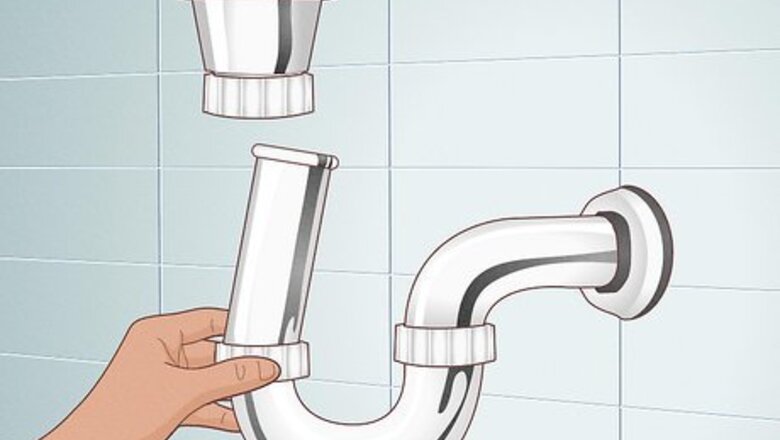
views
Prepping the Sink

Remove the pipe beneath the sink. Unscrew the T-junction or pipe segment closest to the sink and set it aside. Leave the water trap (U-bend) in place to keep sewer gases at bay.
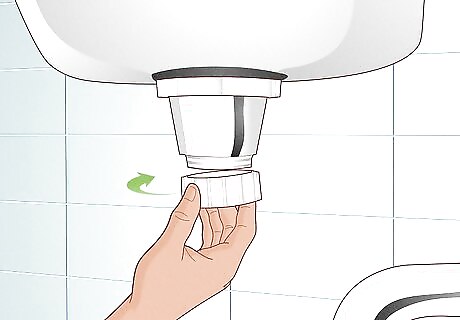
Unscrew the nut at the base of the basket strainer. Approach the basket strainer from below and unscrew the lowest nut. This should free the flanged tailpiece (a straight, collared tube) and top hat gasket (a small circle with a flat rim). Set these parts aside.
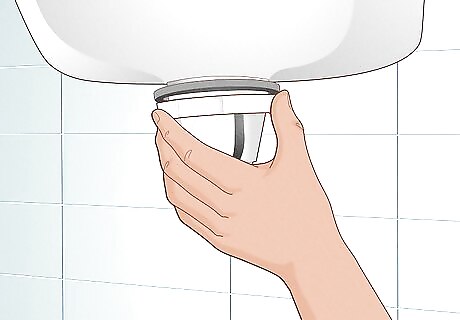
Take off the large nut at the top of the basket strainer. There's one more large nut for you to unscrew. Remove this and you'll have complete access to the basket strainer.
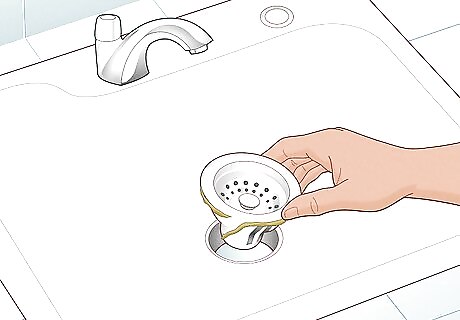
Remove the basket strainer. Once the nut is removed, several smaller gaskets and washers will fall down or hang loose around the basket strainer. Your replacement basket strainer should include replacement parts for these, so you can safely discard them. Remove the old basket itself as well, lifting it out from the top of the sink.

Clean the sink hole thoroughly on both sides. Scrub the top and bottom of the sink around the empty hole using a clean, soapy sponge or cloth. It is vital to get the area as clean as possible so the plumber's putty can form a good bond. Dry thoroughly once finished. If there's old sealant or other gunk in this area, scrape it off with a putty knife. Serious buildup may require paint thinner or another solvent. Always follow the product's safety label instructions when using solvents.
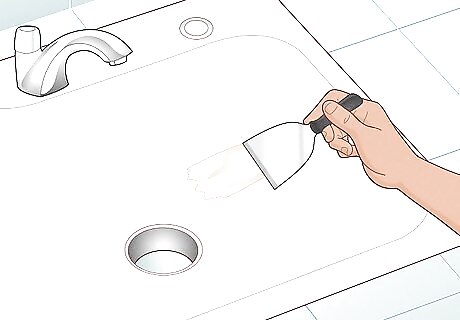
Repair holes in the sink basin if present. It's possible your leaky sink was caused by a puncture in the basin, rather than the basket strainer. Inspect the sink carefully, especially next to the hole where the old strainer may have obscured a puncture. A large hole or network of cracks may require a full sink replacement, but you can repair small holes as follows: Stainless steel sink: Sand the surface around the hole and wipe with an ammonia-based cleaner. Mix, apply, and let cure a two-part stainless steel epoxy according to label instructions. Ceramic sink: Drill any small cracks to create a rough surface. Fill completely with waterproof ceramic putty. Let dry according to label instructions, smoothing it out with a little water just before it dries completely. These repairs may not last forever, but they can last years if properly applied over minor damage.
Installing the New Basket
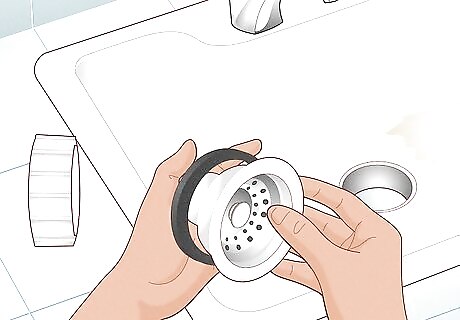
Disassemble the new basket strainer. Your basket strainer most likely comes with all the parts threaded on. Unscrew the nut and set aside everything but the basket itself. Note the order these parts were threaded. There may be minor variations for your model of strainer, but they should be easy to figure out. For example, your strainer may have two screws on the underside. You don't need to do any measurements to choose your new strainer. At least in the United States, all basket strainers and sink drains are manufactured to the same size.

Decide on a method of sealing. Plumbers can have strong opinions on this topic, but plumber's putty is generally a good default choice. However, putty can weaken plastic sinks and stain stone or other porous materials. If your sink is made from one of these substances, use silicone sealant instead. If using silicone sealant, load it into a caulk gun and apply a small bead to the underside of the basket rim. This is a very strong bond, so expect your next replacement to require some force. If using putty, continue reading below for detailed instructions. You can also buy "stainless putty" which is designed to be used on porous materials without staining them.
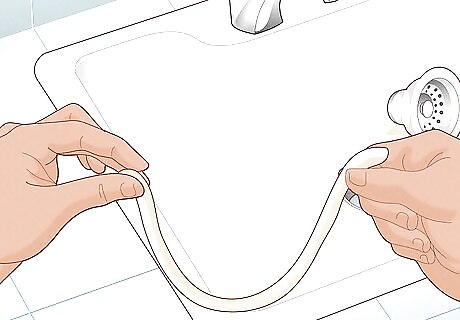
Roll out a piece of putty into a snake. If you are going with putty, make sure your hands (or gloves), putty knife, and work surfaces are bone dry and absolutely clean, as moisture or dirt will make the bond less effective. Roll out a piece of putty into a snake shape, long enough to fit around the new basket. Start with a lump about the size of a golf ball. If the putty is hard and difficult to work with, warm your hands on a heat source, then use your warm hands to soften the putty.
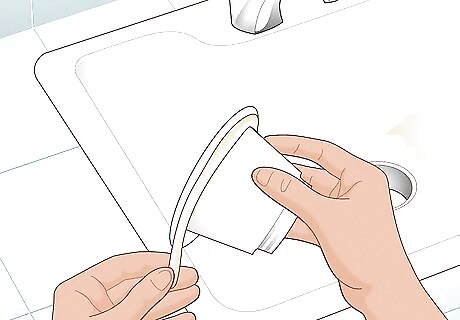
Apply plumber's putty to the underside of the basket rim. Coil it beneath the rim and use your thumbs to flatten it evenly against the surface. Use just enough putty to cover the underside of the rim completely. Apply too much, and you won't be able to push your basket flush with the sink.
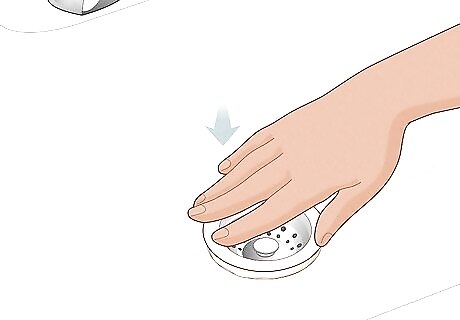
Press the basket into the sink. Use moderate pressure to squeeze the basket down into the sink drain, pressing a little putty out the sides.
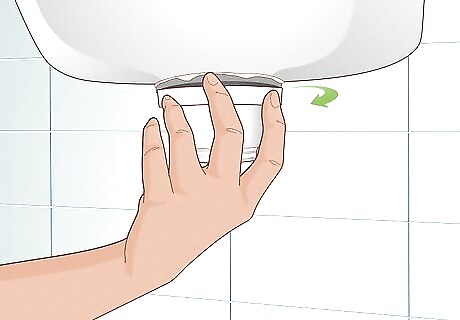
Thread on the gaskets and nut. Return to the underside of the sink. Slide on the rubber gasket, cardboard gasket, and nut that came with your basket strainer assembly. Screw in the nut with moderate pressure using a wrench. The flat rim of the basket nut should be on top as you screw it in.
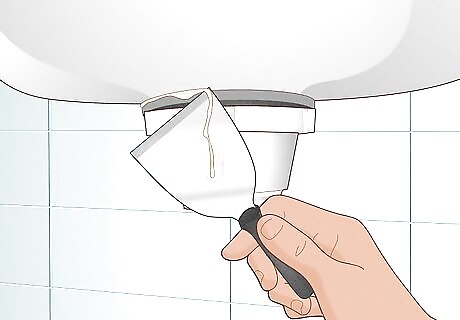
Scrape out excess putty, tighten further, and repeat. When you screwed in the basket nut, some of the putty squeezed out into the sink basin. Use a putty knife to scrape away every scrap of this excess putty, and throw it away. For good measure, tighten the nut further and scrape out the additional putty that emerges. Clean the basin with a rag to remove the last flecks. Avoid extreme force when tightening the nut, or you may break it.

Reattach the tailpiece with new gaskets. Slide a new top hat gasket onto the tailpiece, followed by a new beveled gasket. Thread the tailpiece back onto the basket strainer.
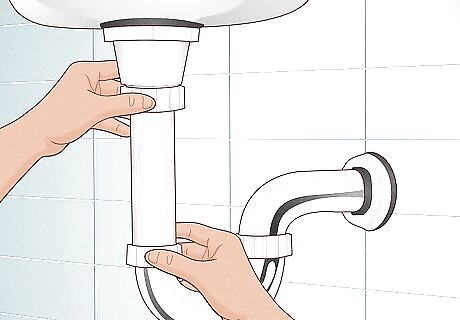
Assemble the rest of the plumbing. Put back the pipe you removed and reattach it at all points. It may be easiest to attach all points loosely at first, then cycle through them tightening in small increments. If you need to remove the water trap (U-bend) to fit the piece back in, take care not to spill the water on yourself. If you dump out the water, run the sink to make another water seal, blocking sewer gas. (If your plumber's putty label specifies a dry curing time, stuff a rag in the water trap until you can use the sink.)

















Comments
0 comment